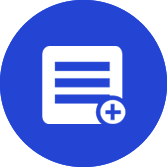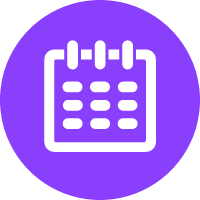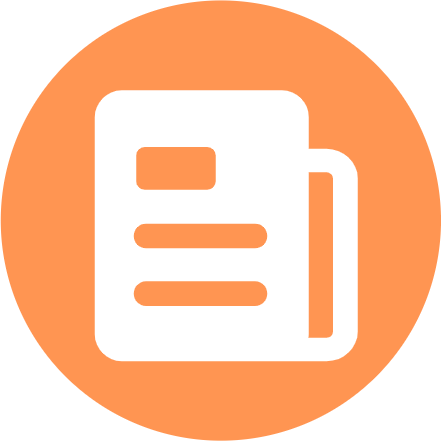-
Cryptocurrencies
-
Exchanges
-
Media
All languages
Russell Coin adopts the master node plan of the currency, and increases the POW mining tax to the master node mechanism, combined with the X20R algorithm, the anonymity is stronger. In this paper, the hashing algorithm is implemented for the first time. Using a hybrid mining method similar to PoW + PoS, RC designed the master node system, PoW + PoS mining mechanism, the master node participates in the master node mining of more than 1000 coins. POW mining rewards 50% of block coins. Russellcoin starts random ports, meaning your ISP won't know what you're doing by monitoring your ports, and can monitor Bitcoin, Peercoin, and even Darkcoin. All TCP network transport layers use secure elliptic curve encryption cipher suites. Fast and simple, the transaction is more secure and convenient. At present, the new function of instant coin insertion has been realized, that is, the zero-time difference technology, which can be used for real-time transactions within 0.6 seconds without using block chains.
Product specification:
Total 21 million
POS + POW hybrid mining
Using X20R algorithm reward mechanism
1000RC can establish master node
Master node rewards 50% of coins
master The node rewards 50% of coins
The first stage rewards 20 coins per block
The second stage rewards 10 coins per block
The third stage rewards 5 coins per block
After the fourth stage, every Block reward 2.5 coins
After the fourth stage, an output of 3.2% of the total amount of coins will be formulated, and the next stage will be entered for every increase of 132,000 block height (half a year).
Technical features
Based on independent innovation, Russell Coin RC has created a "Russell Coin RC Blockchain" solution that provides enterprise-level services. Based on the concept of "open sharing", Russell Coin RC will build blockchain infrastructure, open internal capabilities, share with global enterprises, jointly promote the development of trusted Internet, and create a win-win ecology of blockchain.
Russell Coin RC has accumulated rich industry and technical experience in payment and finance, social media, media and other fields, and has made industry-leading breakthroughs in high concurrent transaction processing; in addition, Russell Coin RC also has massive data The ability to process and analyze and build a financial security system has also accumulated rich experience in the exploration of cloud ecology and industry connections.
Apps and Ecosystem
The application scenarios of the blockchain currently focused on by Russell Coin RC are mainly as follows (including but not limited to)

1. Data
1.1 Data transaction: realize the transparent and auditable process of data transaction, and reshape social credibility
Data is the future of the Internet and machine learning-based economy The most important ingredient, the analysis of data by AI algorithms will lead to many world-changing discoveries. For companies with limited data collection capabilities, data trading will be a mutually beneficial endeavor that can promote innovation for companies and create new revenue streams. However, due to problems such as illegal reselling of data, low information transparency, and easy tampering in the current data trading market, the scale of data trading is limited.
The decentralization, security and non-tamperable traceability of the blockchain can build trust among participants and promote the sustainable and substantial growth of data transactions: data ownership, transaction and authorization scope are recorded in the blockchain Above all, data ownership can be confirmed, and the fine-grained scope of authorization can regulate the use of data. At the same time, every step of data from collection to distribution can be recorded on the blockchain, making the data source traceable, thereby restricting the data source and enhancing data quality. A decentralized data trading platform based on blockchain can form a larger scale global data trading scenario.
1.2 Identity authentication: verify the legitimacy of identity and accelerate the development of digital society
Identity and access management services are an important field of blockchain technology application, not only that, because blockchain technology can bring high reliability The characteristics of uniqueness, traceability and collaboration make it have the potential to become a basic technology in the application field of identity and access management services.
With the acceleration of the digitalization process, the application fields of identity and access management services will become more and more extensive, including the Internet, the Internet of Things, social and economic life, etc. In these application areas, the typical role of identity and access management services is to ensure that users or devices with legal identities can access and enjoy services safely and efficiently.
The identity and access management service plays an important role in various application fields, but at present, the service has been facing problems such as privacy leaks, identity fraud, and fragmentation, which bring great harm to users, devices, and systems. Great challenge.
The introduction and development of blockchain technology provides new ideas for further solving the above problems. Applying blockchain technology to identity and access management services may form a collaborative and transparent identity management solution, which will help enterprises and organizations better complete identity management and access authentication.
The application of Russell Coin RC blockchain technology in identity and access management services will rely on new hardware, software and blockchain platforms to provide professional, safe and efficient identity and access management services for enterprises and organizations. management services.
2. New Energy: Building the Cornerstone of Trust in Clean Energy Transactions
In the field of new energy, the application of blockchain technology is changing the existing industry structure, reducing transaction costs, and retaining More effective records to realize the development path of Energy Internet from digitization to informatization and finally to intelligence. As the cost of distributed photovoltaics and energy storage is greatly reduced, the energy micro-grid community with regional autonomy as its core will gradually become more economical. At the same time, new energy sources such as solar energy are often distributed. Both power plants and households can use solar panels for energy storage. Energy claiming can occur between producers and consumers, so it can The electricity meter measures and registers the power generation of different subjects to form an unalterable power generation ledger; at the same time, the point-to-point claim and transaction of excess power is realized through smart contracts. On the other hand, blockchain can also promote new energy to bring huge public welfare and environmental protection value to society. Through the blockchain and smart meters, the power generation of different entities is calculated and registered to form an unalterable account book of clean power generation. Relevant environmental protection and public welfare organizations can fully verify that this transaction is valid in the blockchain. Issue clean energy production and use certificates to users and power plants to encourage both sides to produce and use new energy.
In a new energy blockchain project, through the use of blockchain technology, users can clearly check each of their transaction records and know which power station each kilowatt-hour of electricity used comes from. According to the electricity price of the power station and the remaining available power generation capacity, it can independently choose its own power supply source. The smart contract directly matches the claim between the power station and the user. By claiming clean electricity, users can obtain authoritative electronic certificates to prove their relevant contributions to energy conservation and emission reduction. As for power generation companies, they can dynamically calculate the supply and demand status of each power station according to the power application submitted by users, and adjust the power generation strategy and price in a timely manner.
3. Internet of Things
Blockchain and Internet of Things are a match made in heaven, which can provide many application scenarios and use cases for Internet of Things. The possibilities are no longer futuristic, the realization of this application is just around the corner.
Blockchain and the Internet of Things are also hot topics in the field of science and technology, and the possibility of combining the two has always attracted attention. From the analysis and conclusion, it can be seen that the blockchain can make up for the five key defects of the Internet of Things, and the application cases of the blockchain in the field of the Internet of Things cover eight major industries. The potential of the blockchain in the field of the Internet of Things is so great, so the upgrading and improvement of blockchain technology should be the focus of current work.
Internet of Things Meets Blockchain
There is no doubt that blockchain and Internet of Things are two hot words in the current technology field. The Internet of Things includes moving objects such as sensors and vehicles, and basically includes any device that uses embedded electronic components to communicate with the outside world, especially the IP protocol.
Combining it with blockchain is beneficial to the entire life cycle of IoT devices and applications, and is an aid to business processes. You can imagine such a scenario, the networked driverless car can use the private chain to ensure the real-time safe communication of the vehicle, including starting the car, confirming the identity of the driver, using smart contracts to exchange insurance and maintenance service information, providing real-time location information, and tracking vehicles.
The blockchain-based distributed ledger technology fills the five key deficiencies of the Internet of Things
1. In the above typical scenarios, the blockchain-based distributed ledger can provide the Internet of Things with trust, ownership records, transparency Performance, communication support
2. It should be noted that the IoT community will develop a private chain in a few years to store transaction information in an extremely secure manner. The Internet of Things architecture that uses centralized servers to collect and store data can write information into local ledgers and synchronize with other localized ledgers to ensure the security and uniqueness of facts
3. All IoT transactions on the blockchain are added Timestamp, guaranteed to be available to future generations
4. The real innovation of the blockchain lies in the digital agreement or smart contract, which can be applied to the blockchain data and execute commercial terms in the communication of the Internet of Things
5. The Internet of Things One of the biggest flaws is that safety standards are not in place. Blockchain with high-end encryption technology can solve security problems.
Vertical application cases of the Internet of Things under this background
1. Industrial manufacturing: The manufacturing cycle begins to enter a completely virtual world, including product development, customer demand monitoring, production, and inventory management. As devices and systems become more intelligent and interactive, the blockchain will also become a ledger at the factory, regional, and global supply chain levels. Thereby greatly reducing costs, strengthening just-in-time production (JIT), better use of factory capacity, and improving operational efficiency;
2. Connected unmanned vehicles: Connected vehicles (Connecte Vehicles) turn vehicles into huge intelligent applications program. Automobile automation has been strengthened year by year, including navigation, roadside assistance, etc. The blockchain will use the digital network to track these devices, realize inter-vehicle communication and automatic tracking of insurance clauses, annual inspection of vehicles, etc.;
3. Transportation: Internet of Things + blockchain = networked transportation. There are many application scenarios in the vehicle network, which can transmit all traffic information and avoid traffic jams and other problems. Extending it to global trade, this transportation network can include water transportation, air transportation, ground transportation network, and track goods transportation;
4. Public technical facilities and smart cities: smart devices have been used to track bridges, roads, power grids, etc. conditions, blockchain can connect all of these together, sharing high efficiencies, performing maintenance, predicting usage and pollution, etc. Another important application is to help remote areas monitor natural disasters and prevent large-scale wildfires, pests and other major disasters;
5. Financial services and insurance: banks can use blockchain to track IoT devices, such as ATMs, and for maintenance. Insurance companies that already use drones to settle property insurance claims in remote areas can use blockchain to verify and verify claims.
6. Home and commercial real estate management: use sensors in housing and commercial buildings to realize smart home and office monitoring; the use cases in the two fields are different, but the application range is large, and the basic functions of distributed ledgers can be integrated.
7. Smart contracts: Blockchain-based cryptocurrencies can implement two advanced business functions: one is the transfer of cryptocurrencies, and the other is the business rules that stipulate the timing of dividend distribution, especially in accordance with the terms. These rules are called "smart contracts" and apply to all these business areas, which can track business rules and take actions according to preset thresholds. For example, self-driving cars that fail the annual inspection must be turned off, and the owner will not pay the insurance premium, and will send a notice to the owner's housing association;
8. Retail: Retailers have used IoT devices and terminals in the business cycle. This includes store floors, tracking store deliveries, understanding customer transportation patterns, wearables, and more. Connected storefronts add shelves to the Internet of Things, which can reduce inventory time. Blockchain can enhance all use cases, enabling vital connections between retailers and consumers, using automation to remove middlemen, be they card issuers or central servers. For example, consumers can store product information and sizes in the blockchain, and retailers can obtain relevant data safely and directly.
4. Communications and Telecommunications
Carrier Cloud-Network Collaboration: Solve Carrier Network Fragmentation and Build New Business Models
Traditional Carriers are based on a "chimney-style network-as-a-service" architecture , both business and network are operated by operators, the network is the supporting system, and the fees between the business and the network are settled internally. However, with the integration of ICT, the communication industry is moving from closed to open. In addition to operators, service providers also include A large number of OTT cloud service providers and virtual service providers. In order to support the requirements of the new business ecology, the operator's network needs to be restructured into the cloud to realize the flexible, elastic, and automated network-as-a-service (NaaS) capabilities similar to cloud computing IaaS/PaaS (Infrastructure as a Service/Platform as a Service) . These capabilities can be opened to cloud service providers and virtual service providers for a fee to realize the realization of network capabilities. The blockchain can establish trust between different nodes. As the operator network transforms from a closed internal settlement method to a monetized external service, blockchain technology can be introduced to establish a mutual trust between multi-cloud, multi-network, and multi-terminal. New trading model.
According to the survey of enterprise customers by British Telecom (BT), 90% of enterprises hope to obtain "cloud-network integration" services to ensure end-to-end SLA (Service-Level Agreement), security, and access to end-to-end End-to-end performance reporting, end-to-end management and fault diagnosis capabilities. The cloud network system needs to support logging in from any cloud service or network business sales portal, so that you can purchase any cloud service or network business function without having to log in to different portals multiple times.
Based on the above requirements, a cloud-network business solution based on the alliance chain can be designed: authorize and authenticate the sales of "multi-cloud + multi-network" for enterprises in the alliance, and keep accounts for the sales records and configuration of the cloud and network and traceback. Take the purchase of the network on the cloud service side as an example: the cloud service side submits a purchase/configuration information request to the blockchain, and the network service side verifies the request and confirms the request, and the cloud service and network service side reach a consensus and write it into the blockchain. success. In terms of settlement, it can be settled according to the purchase information, configuration change information, and usage information on the blockchain, while ensuring the consistency of the ledger and supporting real-time settlement.
5. Finance
Supply chain finance: Effectively reduce financial risks and expand financial business development
RC cares about the application scenarios of blockchain in the financial industry, because it is related to our " "Cloud, pipe, and terminal" directly matches the core strategy of financial services to promote digital transformation and maturity. In addition, the blockchain accelerates the secure distribution, presentation, transmission, and processing of information. The industries that benefit most from blockchain technology tend to be those industries with low trust between participants and high requirements for transaction record security and integrity, and the financial industry is one of them. Relevant consulting reports show that blockchain or distributed ledger technology can save the financial industry 5 billion to 7 billion US dollars in annual costs. This cost reduction mainly comes from the improvement of blockchain to existing businesses, such as cross-border payment value chain. Improvement, optimization of reconciliation process, efficiency improvement of user identity authentication/anti-money laundering process, information sharing in supply chain finance and inclusive finance, etc.
"Blockchain + supply chain finance" is one of the best application scenarios of blockchain in the financial field and has a broad market space. Supply chain finance has a systematic and structural business philosophy, which determines that information flow is the key to supply chain financial risk control. How to obtain real, comprehensive and effective data is not only the basis of supply chain financial risk control, but also the difficulty of risk control. Through technologies such as blockchain distributed ledgers, many companies and financial institutions participating in the supply chain can Set up a credible information network, obtain information from the source of business information, and then achieve end-to-end information data transparency and non-tampering through the blockchain. All participants share business flow through a decentralized accounting system , logistics, capital flow information. Banks carry out credit decision-making based on real corporate trade backgrounds and real-time operating data, shortening the operating time for data collection, verification, and evaluation, reducing risk costs, and improving the accuracy and efficiency of decision-making. Through supply chain finance, enterprises can obtain lower loan costs and faster and faster financial services to help the smooth development and expansion of business.
Specifically, blockchain technology can provide strong support for supply chain finance in the following aspects:
Through the non-tamperable modification of blockchain, the funds of upstream and downstream enterprises and surrounding enterprises in supply chain finance can be recorded Flow, logistics, and business flow processes, reducing the difficulty of credible data collection and transmission in the supply chain finance process; providing convenience for financial institutions to obtain first-hand supply chain information. If the enterprise widely deploys IoT terminals, combined with the purchase, sales and inventory information of the enterprise information system, it can truly outline the operation and asset status of the enterprise; the enterprise generates funds with upstream and downstream enterprises through corporate online banking, bank-enterprise direct connection and other channels Provide real financial capital information; this information will help financial institutions greatly simplify the credit evaluation process and costs in the process of trade financing, warehouse receipt loans, and accounts receivable loans, thereby reducing the cost of corporate financing and providing financing efficiency;
Through technical means such as "smart contracts", add new safeguards to the "contract trust" relationship between enterprises, and simplify the process of mutual guarantee, risk sharing, repurchase, contract performance and other business activities between enterprises , to reduce the time cost and capital cost of handling breach of contract disputes. Taking contract financing as an example, the buyer and seller of the contract establish a medium-to-long-term supply relationship, and the sales data of the buyer derives the evaluation data of the procurement demand for raw materials. The real supply and demand relationship in the market is the first guarantee for financing recovery; After the risk conditions are triggered, whether the purchaser follows the instructions to carry out risk compensation performance measures such as repurchase and refund will directly affect whether the financing loan will generate non-performing assets. In the current operation, the above-mentioned performance constraints mainly come from "contract trust", but there may be legal disputes during the performance process, which will increase the time and cost of legal disputes in the later stage. Introduce the blockchain "smart contract", put the above-mentioned contract matters on the chain, make it automatically trigger and operate, and make up for the accidental process and subjective breach of contract in the performance of the contract from a technical point of view, so as to ensure the security of financing.
6. Notarization
Notarization is the notarization of the authenticity and legality of civil juristic acts, facts with legal significance, and documents based on the application of natural persons, legal persons or other organizations, and in accordance with legal procedures. Activities that prove sex. Traditional notarization has pain points such as cumbersome procedures and inefficient processing.
Aiming at the pain points in the field of notarization, the use of blockchain for third-party recording will help maintain a blockchain ledger that is securely stored and recorded based on time stamps, and will improve the transparency of the data certification process. Attributes while saving costs and improving efficiency.
RC believes that the most important value that the application of blockchain in the field of notarization can achieve is to prove the existence, integrity and ownership of any document, that is, proof of existence, proof of integrity and proof of ownership. Based on this value, the application of RC in the field of notarization has the following application scenarios:
Certificate blockchain notarization
Taking academic certificates as an example, in the case of application, evaluation, etc. ) to prove the authenticity and legitimacy, especially for foreign-related academic certificates, the need for notarization of certificates is more frequent. In addition, there is also a need for notarization of various certificates such as real estate certificates, marriage certificates, and driver's licenses. However, the current certificate notarization has problems such as inefficiency and cumbersome procedures, which bring a lot of inconvenience.
Notarization of Legal Evidence Blockchain
For the economy, every contract may become important evidence in the future, and notarization of contracts will greatly benefit their legal rights and interests. For individuals, obtaining notarization of key legal evidence is the key to protecting their legal rights. For example, notarization of wills and various types of legal evidence such as voice, email, WeChat, and Weibo are powerful evidence for legal appeals. As a professional legal consulting service provider, lawyers need to be efficient per unit of time, but due to the "difficulty in obtaining evidence", a lot of precious time is taken up. If there is a convenient and simple evidence collection tool, it will greatly benefit the protection of individual legal rights and improve the efficiency of lawyers' work.
Medical case information blockchain notarization
As the core work of hospital information construction, electronic medical records have been adopted by most hospitals. However, it is accompanied by the legal effect of electronic medical record information, especially the authenticity certification of electronic medical records in litigation, which deserves special attention. In most medical dispute cases, the certification of the legal validity of medical records is an unavoidable difficulty for the judiciary. According to the relevant provisions of the evidence rules of the Civil Procedure Law, medical records as evidential materials should have the "three characteristics" of evidence, namely authenticity, legality, and relevance. Among them, the authenticity of medical records is the most questioned.
E-government data blockchain notarization
Due to its seriousness, e-government data has high requirements for data accuracy and integrity, because it is related to the credibility of government agencies, and the traceability of the activity process is particularly important . Only relying on the e-government platform itself to solve the trust problem is likely to affect the authority and credibility of the government.
Blockchain Notarization of Digital Works
Ineffective supervision of online media has led to frequent online infringements, especially copyright infringements. The problem of infringement is difficult to solve, which also makes intellectual property rights become the "hardest hit area" of the Internet. Because it is difficult to identify the content and release time of the copyright owner's work, it is even more difficult to independently initiate rights protection because the evidence is difficult to obtain legal identification.
Blockchain notarization of contract documents
The scope of use of contracts is quite wide, the content is very complicated, and the degree of professionalism is strong. In order to ensure that both parties who signed the contract fulfill the terms of the contract and avoid disputes and lawsuits, it is very necessary to notarize whether the content of the contract complies with relevant laws and regulations and whether the representatives of both parties who signed the contract have legal qualifications, etc., such as the export of labor services in my country. Strict contract terms are required. The notary office must carefully examine whether the terms of the contract violate the law, etc. Therefore, contract notarization is also an indispensable and necessary link in my country's foreign cooperation.
Artwork Calligraphy and Painting Block Chain Notarization
Under the background of the knowledge economy era, artworks show huge commercial value, but in the face of the infringement of artworks, artists also face many difficulties in defending their rights. Some experts pointed out that the difficulty of proving works of art, the high cost of rights protection and the weak awareness of artists themselves are important reasons for the frequent infringement of works.
Notarization of intangible works such as the Internet
Using Russell Coin RC notarization technology can notarize almost any document, including documents, webpages, WeChat, Weibo, emails, documents, and certificates, involving all walks of life and fields. Notarization of files in any format including Word, PPT, TXT, PDF, JPG, PNG, etc. Compared with the documents kept by the existing notarization centers in various countries, the way of keeping them is to stamp the dated materials and take photos and load them into the system. These paper documents or picture records are likely to be lost due to attacks on the IT system itself. For this, Russell Coin can provide a complete solution. Record the unique numerical hash value generated by the file on the blockchain, and stamp the recorded file with the time stamp of entering the notarization system. Once the block is generated, the recorded file information will never be tampered with. For when, who, and registered files The content is fully unique and traceable. And because of the widely distributed nature of the blockchain, in any disaster situation, as long as more than one node is still working, the certified data information can be completely preserved. The proof of existence and authenticity of the document can be guaranteed in the repeated self-certification of many widely distributed decentralized nodes.
7. Games
Russell Coin RC prediction: Blockchain will subvert the game industry.
Combining blockchain technology with the development of the game industry may be able to solve many pain points in the above-mentioned game industry. Based on the characteristics of decentralization and distributed accounting, blockchain may bring about subversive changes to the game industry .
Today's game industry is developing rapidly. In 2017, the market size reached 106.5 billion US dollars, with an average annual compound growth rate of about 12.3%. There are 2.2 billion players in the world, and more than 1 billion paying users. However, there are many problems behind the amazing data.
In the traditional game industry, CP, as the creator of game content, has always been at the bottom of the value chain and cannot get the most direct benefits. CP is under the greatest pressure, but most of the profits are divided by publishers and channel providers; Game developers are basically in dire straits; in addition, problems such as data monopoly by operators, proliferation of plug-ins, gradually shortened life cycles, and illegal operations have also been regarded as chronic problems in the game industry.
Combining blockchain technology with the development of the game industry may be able to solve many pain points in the above-mentioned game industry. Based on the characteristics of decentralization and distributed accounting, blockchain may bring about subversive changes to the game industry .
How does blockchain disrupt the value chain of the game industry?
The emergence of the blockchain has brought new possibilities to the value distribution rules of the game industry. The decentralization of the blockchain can return the right to know data and economic control from centralized organizers to players. Blockchain technology is a distributed bookkeeping method, everyone can participate in bookkeeping, and everyone will get an identical book, which means that all data is open and transparent, and everyone can You can see what data changes on each account
, and all the data in it can hardly be modified, which means it is very safe, and any small actions that players want to do will be permanently recorded; in addition, the block Everyone on the chain has completely equal power, and the system will not collapse because of any one more or one less person, and naturally there is no so-called central server.
Corresponding to the game industry, first of all, it is precisely because of the high safety factor of the blockchain that there will be nowhere to hide in blockchain games such as account theft, fraud, and cheating. Secondly, the advantage of not having a central server is that game operators and the majority of players have the same right to know about game data. This prevents the unfairness caused by the monopoly of data by game operators.
The decentralized nature of blockchain technology can also return the dominance of the in-game economy from the centralized organizer to the majority of players. The digital cryptocurrency based on blockchain technology cannot be controlled or modified, which makes the trading center hub represented by the game mall unnecessary, because players can establish an online economy by themselves.
In the traditional game industry, players pay in games, but they cannot get direct benefits, and the growth of game value is not directly related to the interests of players. The carrier for game companies to manage digital virtual property is their own server. The existence of the server has restricted players: what players have is the right to use virtual property, not ownership.
In addition, players' virtual property cannot be "exchanged". This is also a problem that has always plagued players: players spend a lot of money or energy on a certain game, but when they decide to leave, they cannot exchange their own virtual property for another game.
Blockchain games can change everything. The blockchain can put the game currency and props of traditional games on the chain to realize assetization. In the blockchain system, players are the real owners of these game assets. The indestructibility of the blockchain protocol makes the property rights on the chain clear, and it will not disappear out of thin air due to the suspension of operation of the game server.
The problem of "exchange" can also be solved in theory, but the degree of freedom of "exchange" depends on the size of the game that the blockchain is applicable to, that is to say, whether there are enough games that follow a certain blockchain at the same time .
The blockchain project is based on a trust relationship of decentralized distributed ledgers, and its value hinges on community building. The more community users agree on the value, the higher the value of the project. Just like Bitcoin, the more people
recognize it and hold it more, the higher its value will be. Similarly, the more game users recognize your game and are willing to hold your game, the higher the value of your game. The combination of blockchain and games makes game users equivalent to owning the shares of blockchain projects. The value growth of games has a direct relationship with players. Users are both investors and benefit sharers.
In theory, if the blockchain successfully builds a completely decentralized game economy, then there is no need for middlemen, and developers can directly contact players (or vice versa, everyone can become a middleman , to promote in the
game community and obtain corresponding benefits).
In the current game industry chain, game developers have a very difficult life, and they need to transfer a large part of their revenue to publishers and distributors. Originally, the competitiveness of a game should lie in the quality of the game itself, but now it has given way to promotion and marketing. These intermediate links do not generate value at all, but only convey value, and also consume a lot of traffic costs.
From the perspective of the general environment of the game, the existence of middlemen is actually a loss of overall value. The return of game value lies in putting developers and players at the core, reducing costs, and improving efficiency. Only in this way can the game industry be truly promoted. benign development.
Some large game companies almost monopolize game distribution channels, and they have vested interests. Therefore, it should be said that if the blockchain can succeed, it will be a boon for small and medium game companies. The development of blockchain games will not only greatly weaken the advantages of
channel providers such as Apple and Google, but also break the hegemony of the two giant companies, Tencent and NetEase, over games.
Difficulties in the development of blockchain games
Although blockchain games are a very good blue ocean market, they are still in their infancy. The development of blockchain games
needs three stages:
The first stage, data mapping. That is to establish a one-to-one mapping relationship between the digital assets in the game and the Token on the chain. At this stage, the game is still centralized, nothing more than allowing the part of the game assets that have established a mapping relationship with Token to circulate freely among players, between players and trading platforms, and between players and investors. Now the blockchain is very mature for issuing coins to games, and it can be realized quickly.
The second stage, data on-chain. At this stage, game data is decentralized, game assets are stored directly on the chain, and all information of users in the game is also read from the chain. The realization of this step requires the support of the underlying technology of the blockchain.
The third stage is logical chaining. This stage is to put the core logic in the game, such as: combat calculations are written as smart contracts on the chain, and the player's game behavior in the game is to trigger the smart contract. This stage also requires the support of the underlying technology of the blockchain, but it can be realized in the next 1 to 2 years.
All in all, it is still in the early stage of the blockchain game, and large companies have not fully entered the game. Large companies are relatively slow in decision-making and action, and will consider many policy factors. Blockchain games may be an opportunity for small and medium-sized R&D companies to overtake large companies.
8. Big Data
With the continuous development of the sharing economy, the integration and symbiotic development of blockchain technology and big data technology can be said to be the general trend. On the one hand, blockchain technology can solve the bottleneck of current big data technology and can better serve the sharing economy; on the other hand, the gradually mature big data technology also needs an application entity to reflect its own value. As two independent Internet technologies, big data technology and blockchain technology must not only overcome technical difficulties, but also integrate the two through the power of the market in order to achieve full integration.
1. The technical integration of blockchain and big data Since big data technology has been developed for a period of time, it can be said to be a relatively mature Internet technology.因此,以大数据技术作为载体,将区块链技术作为新的技术融入到大数据技术中,在实际的操作中比较容易实现。第一,将区块链技术作为大数据技术平台的数据搜集技术, 打破数据孤岛现象。区块链技术的本质是一种分布式存储技术,属于计算机底层技术。在现有的计算机技术能力下,只要基于大数据平台开发出一套符合区块链技术的程序与接口,就可以直接让区块链技术与大数据平台进行融合并为其提供服务,可以直接实现区块链技术与大数据技术的融合。并且由区块链技术在数据方面的开放共享、不可篡改、可追溯等特征,可以确保采用了区块链技术的大数据平台所搜集到的数据将是真实与可靠的;第二,利用区块链技术对数据的检验性,将区块链数据作为大数据平台的数据源,保护数据安全。数据隐私保护作为限制共享经济持续发展的重要因素之一,依靠区块链技术的私钥签名验证形式可有效保护数据的安全性。建议各行业组建各自的区块链联盟平台,将行业中的企业以节点形式加入到区块链系统当中,只有获得授权的经济体才有资格对数据进行查看;第三,将区块链系统中的存储数据作为资产可以自由
的在大数据平台中进行交易,从而达到两种技术融合的目的。
比如,建立数据积分系统。当企业上传数据到区块链系统中时,根据数据价值系统可以给其一定的积分。当企业要进行数据查询时,需要扣除一定的积分。通过将数据作为资产的形式,以交易方式将区块链技术与大数据技术进行融合。
2. 政府推动区块链技术与大数据技术融合推动社会各行业进行数据化改革,将行业数据化发展上升到国家战略高度。第一,制定行业数据化发展统一标准,为区块链技术与大数据技术发展提供基础。同时,注重行业数据化发展产学研的结合,鼓励高等院校或者科研机构与正在进行数据化转型的行业进行合作,形成遇到困难- 解决困难- 发现困难的良性发展循环;第二,出台有关大数据和区块链法律法规,以强化数据信息监管。虽然政府应当鼓励各行业与各企业积极发展区块链技术与大数据技术,尽早的实现行业数据化发展。但是在数字信息化时代,只有在数据监管到位的环境中,保证数据信息安全,“区块链+大数据”才能更好融合与健康发展。
比如,政府可以成立数据保护部门机构, 专门监督各行业数据化转型过程中的行为,看是否有违规行为。并且要对数据进行分类监管,对于大数据搜集到的数据政府可以持开放态度,而对于区块链技术所包含的私人数据要严加监管。
3. 企业推动区块链技术有大数据技术融合第一,实行企业内部数据化运营与管理,加快区块链技术与大数据技术建设。建议企业内部在实行数据化运营与管理时,可先在非重点业务或者部门进行试验性整改。待非重点业务或者部门有一定经验后,再逐渐向重点业务或者重点部门进行转型升级;第二,加强互联网技术人才培养,企业设立专门的数据业务部门。企业要想实现区块链技术与大数据技术发展并逐步实现融合,必须要有人才作为基础。企业可以与高校合作培养专业的区块链技术或者大数据技术的互联网复合型人才,也可以通过社会教育培训机构直接招收具有互联网技术的人才,作为企业人才储备。此外,企业还应当成立专门从事互联网技术研发、管理与运营的独立部门,以加快企业数据化转型。











